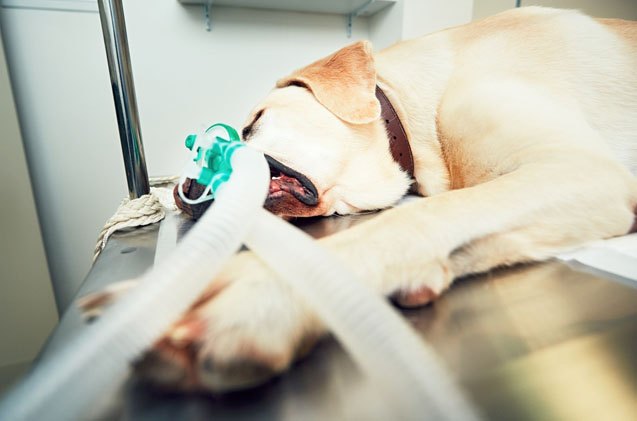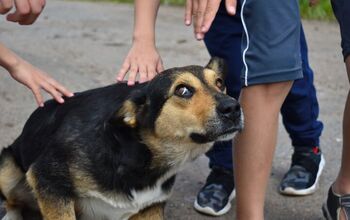What You Need to Know About Sensitivity to Anesthesia in Dogs

Anesthesia is an exact science and when administered incorrectly, it can be extremely dangerous. Even in cases where the anesthesia is administered properly, however, some dogs develop bad reactions because they have an increased sensitivity to it. Keep reading to learn why some dogs are more sensitive to anesthesia than others and what precautions you should take with your own dog.
Which Dogs Are Sensitive to Anesthesia?
Generally speaking, putting a dog under anesthesia gets more dangerous the older the dog is. There are other factors besides age which play a role in determining the risk, however. For example, dogs with brachycephalic airway syndrome are more sensitive to anesthesia and have a higher risk for airway obstruction than breeds with longer faces. There are also certain breeds which have an increased responsiveness to anesthesia or that take longer to recover from it than others – here are a few breeds that are more sensitive to anesthesia than others:
- Bulldogs
- Pugs
- Boston Terriers
- Boxers
- Whippets
- Greyhounds
- Afghan Hounds
- Borzoi
- Irish Wolfhounds
- Saluki
- Australian Shepherd
- Shetland Sheepdog
In addition to these breeds that are more sensitive to anesthesia, there are also giant breeds which have a heightened response to anesthesia – this comes with a whole separate set of risks. You might assume that giant breeds need higher doses of anesthesia to put them out but, in reality, they tend to over-respond to the drugs which can be very dangerous. These dogs need to be dosed according to their lean body mass or surface area, not their bodyweight.
What Makes Some Dogs More Sensitive Than Others?
For brachycephalic breeds (dogs with pushed-in faces), the risks associated with anesthesia have to do with airway obstruction. Anesthesia can put additional stress on the airway which, in dogs with brachycephalic airway syndrome, increases the risk for airway contraction which can then lead to an obstruction. In sighthounds like Whippets, Greyhounds, and Afghan hounds, these dogs metabolize drugs differently than other breeds – they often metabolize drugs more slowly and may recover more slowly as well. These dogs also have a risk for cardiac abnormalities and hyperthermia.
Herding breeds like the Australian Shepherd and Shetland sheepdog are often born with a genetic mutation in the ABCB1 gene which causes certain drugs (including anesthesia agents) to accumulate in the brain. This can lead to over-sedation and respiratory depression. Toy breeds are more sensitive to anesthesia simply due to their size – dosing is very tricky for dogs that weigh less than 10 pounds. Any breed that has problems with blood clotting or a predisposition for dilated cardiomyopathy may also be extra-sensitive to anesthesia.
Before you consent to having your dog put under anesthesia, you need to know the risks. Ask your doctor whether your dog might be more sensitive to anesthesia than others and whether there are any steps you can take to protect him. Generally speaking, you should avoid putting a dog under anesthesia as much as possible. This is why many veterinarians recommend having teeth cleanings and dewclaw removals done at the same time as spay/neuter surgery to prevent having to put the dog under a second time.

Kate Barrington is the loving owner of two cats (Bagel and Munchkin) and a noisy herd of guinea pigs. Having grown up with golden retrievers, Kate has a great deal of experience with dogs but labels herself a lover of all pets. Having received a Bachelor's degree in English, Kate has combined her love for pets and her passion for writing to create her own freelance writing business, specializing in the pet niche.
More by Kate Barrington























